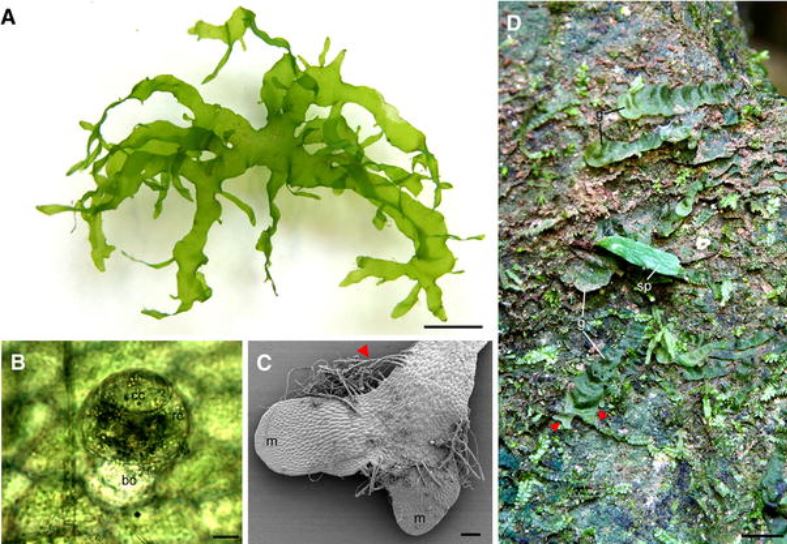Photo by Rǫgn licensed under CC BY-SA 4.0
If you enjoy planted aquariums, you may have crossed paths with a peculiar little plant called Süßwassertang. It can be propagated by breaking off tiny pieces, which eventually grow into a tangled carpet of tiny green thalli. One could be excused for thinking that Süßwassertang was some sort of liverwort and indeed, for quite some time was marketed as such. That all changed in 2009 when it was revealed that this was not a liverwort at all but rather the gametophyte of a fern.
Despite its German name, Süßwassertang appears to have originated in tropical parts of Africa and Asia. It is surprisingly hard to find out any information about this plant outside of its use in the aquarium trade. The name Süßwassertang translates to “freshwater seaweed” and indeed, that is exactly what it looks like. The fact that this is actually the gametophyte of a fern may seem startling at first but when you consider what they must deal with in nature, the situation makes a bit more sense.
A Süßwassertang gametophyte. B An antheridium, showing a cap cell (cc), ring cell (rc), and basal cell (bc). Bar: 20 µm. C Developing lateral branches with rhizoids (arrowhead) and meristems (m) Bar: 0.2 mm. D Ribbon-like, branched gametophyte (g) of L. spectabilis bearing a young sporophyte (sp) Bar: 1 cm
Fern gametophytes are surprisingly hardy considering their small size and delicate appearance. They are amazing in their ability to tolerate harsh conditions like drought and freezing temperatures. Because of this, fern gametophytes sometimes establish themselves in places that would be unfavorable for their sporophyte generation. For some, this means never completing their lifecycle. Others, however, seem to have overcome the issue by remaining in their gametophyte stage forever. Though no sexual reproduction occurs for these permanent gametophytes, they nonetheless persist and reproduce by breaking off tiny pieces, which grow into new colonies.
The sporophyte of a related species, Lomariopsis marginata, demonstrating the usual epiphytic habit of this genus. Photo by Alex Popovkin, Bahia, Brazil licensed under CC BY-NC-SA 2.0
This appears to be the case for Süßwassertang. Amazingly, despite a few attempts, no sporophytes have ever been coaxed from any gametophyte. It would appear that this is yet another species that has given up its sporophyte phase for an entirely vegetative habit. What is most remarkable is what the molecular work says about Süßwassertang taxonomically. It appears that this plant its nestled into a group of epiphytic ferns in the genus Lomariopsis. How this species evolved from vine-like ferns living in trees to an asexual colony of aquatic gametophytes is anyones’ guess but it is an incredible jump to say the least.
Further Reading: [1]








